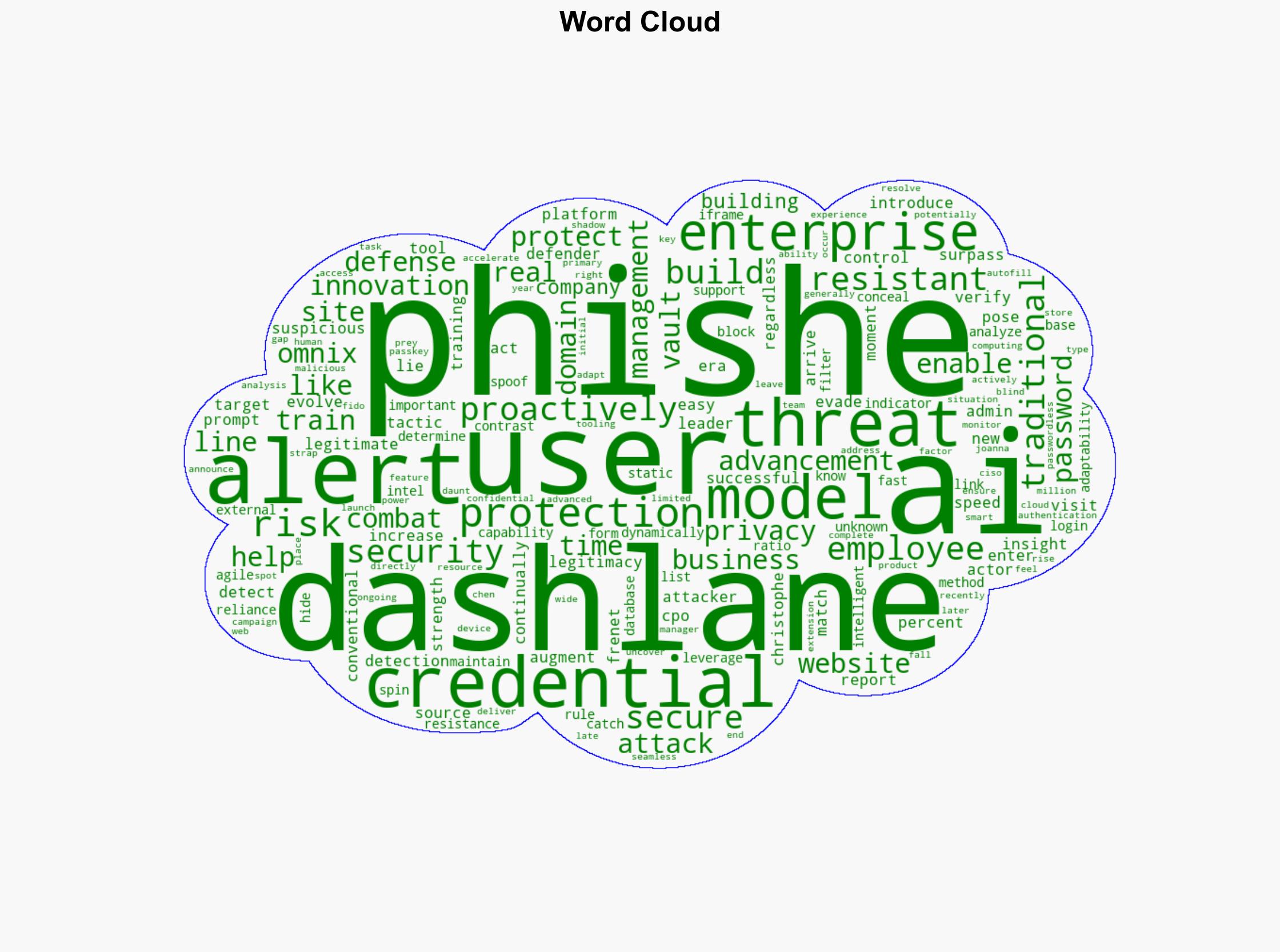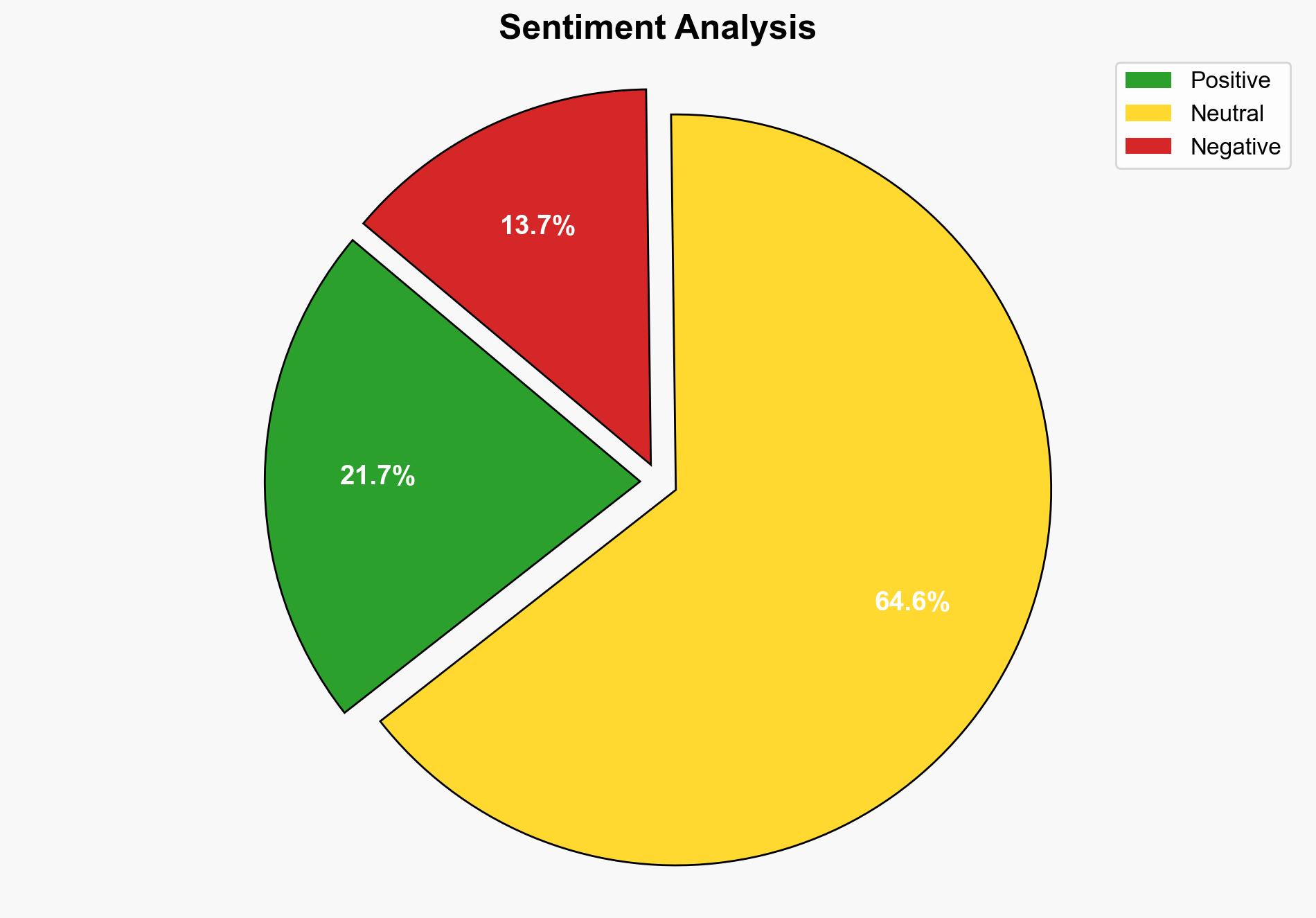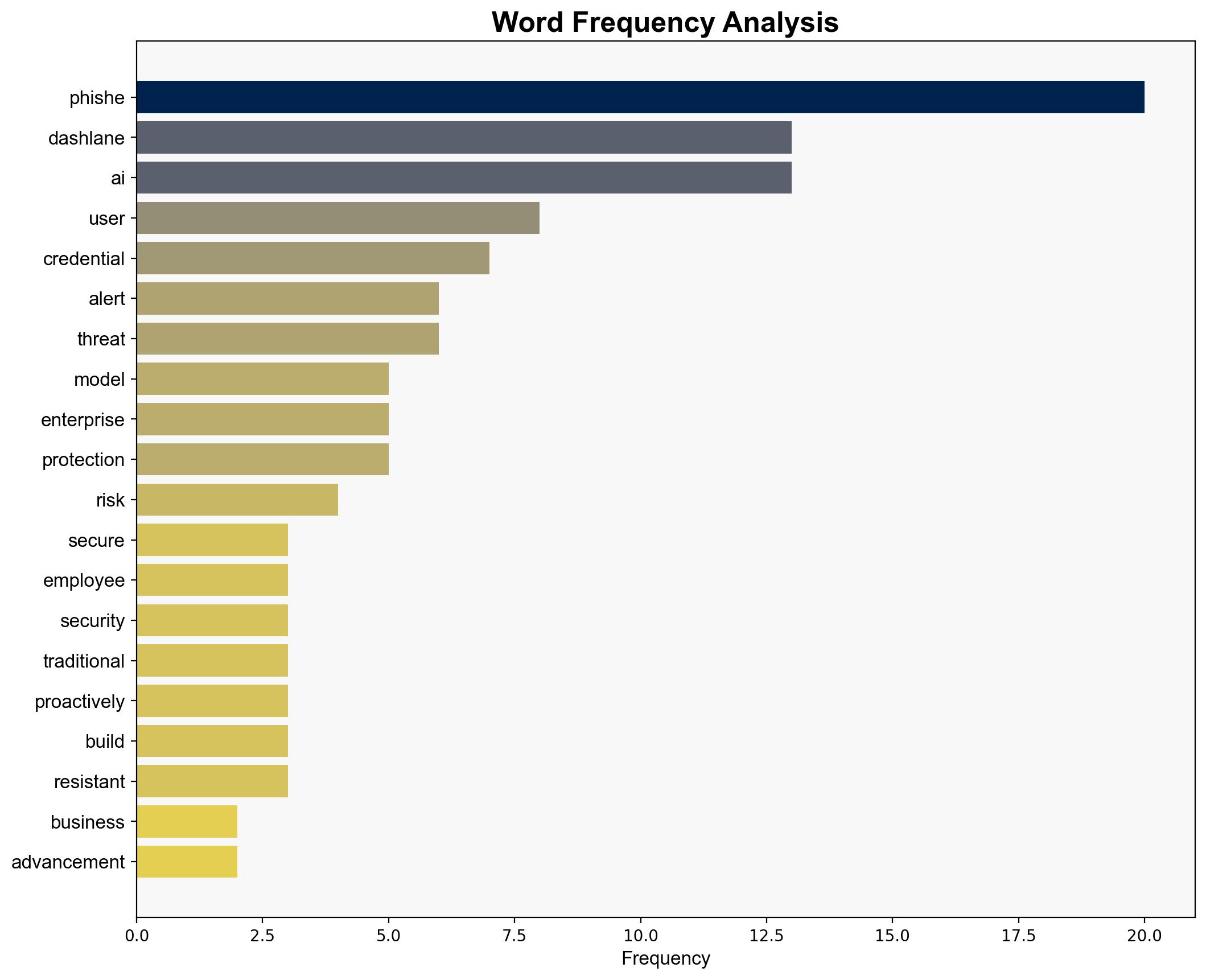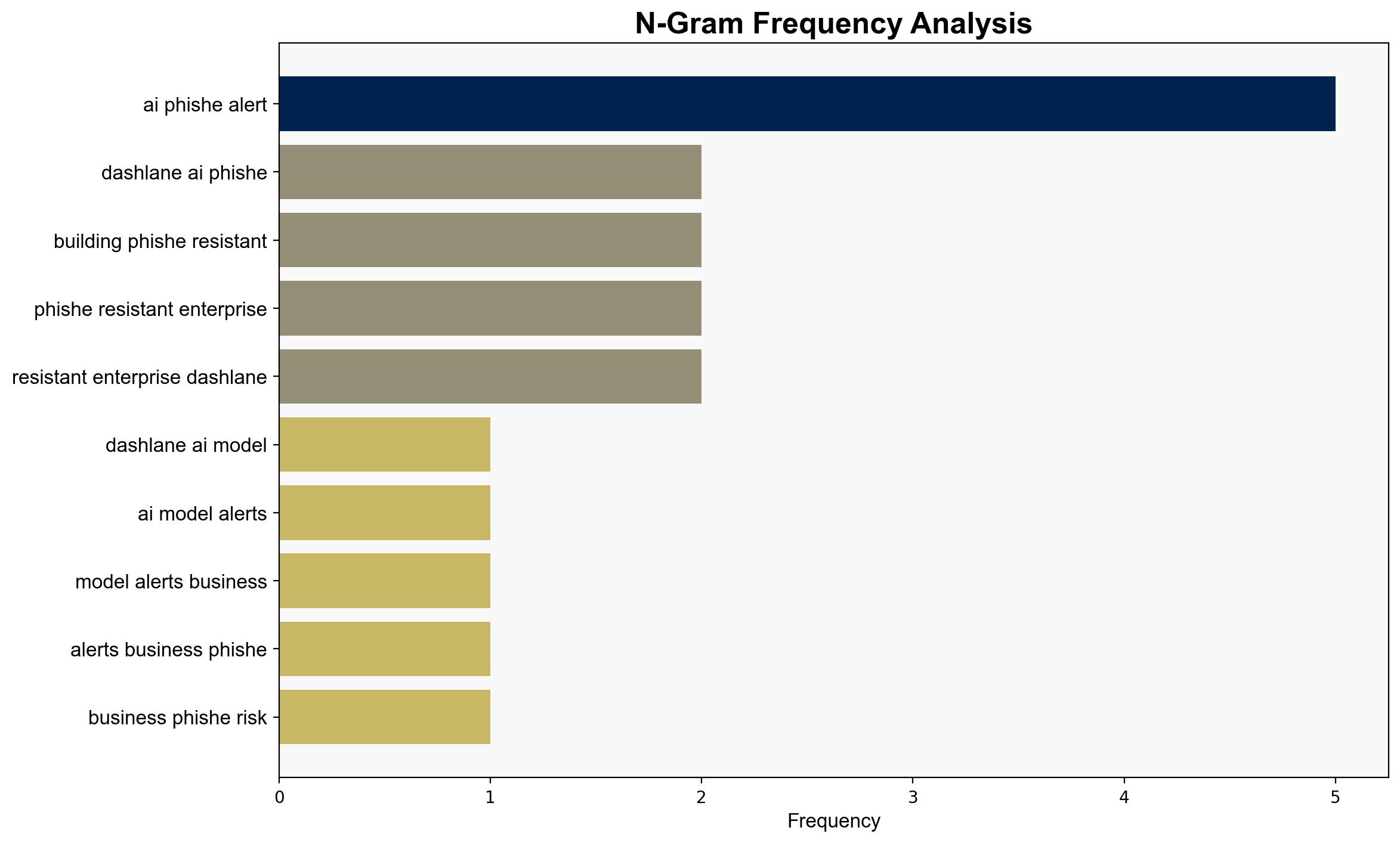Dashlanes AI model alerts businesses to phishing risks – Help Net Security
Published on: 2025-06-18
Intelligence Report: Dashlane’s AI Model Alerts Businesses to Phishing Risks – Help Net Security
1. BLUF (Bottom Line Up Front)
Dashlane has introduced an AI-powered phishing alert system designed to enhance cybersecurity for enterprises by proactively identifying and mitigating phishing threats. This innovation is integrated into Dashlane’s Omnix platform, offering real-time alerts and insights to administrators, thereby strengthening defenses against evolving phishing tactics. The AI model’s ability to dynamically detect both known and unknown threats positions it as a critical tool in building phishing-resistant enterprises.
2. Detailed Analysis
The following structured analytic techniques have been applied to ensure methodological consistency:
Adversarial Threat Simulation
Dashlane’s AI model simulates potential cyber adversary actions, identifying vulnerabilities and enhancing resilience strategies by adapting to new phishing tactics.
Indicators Development
The AI system monitors behavioral and technical anomalies in real-time, providing early detection of phishing threats through analysis of login forms, external link ratios, and domain legitimacy.
Bayesian Scenario Modeling
Utilizing probabilistic inference, the AI model predicts potential cyberattack pathways, allowing enterprises to prepare for various threat scenarios effectively.
3. Implications and Strategic Risks
The deployment of AI in phishing detection highlights a significant shift in cybersecurity strategies, emphasizing the need for adaptive and proactive measures. The increasing sophistication of phishing attacks, potentially augmented by AI, poses systemic vulnerabilities that could impact economic stability and national security. The reliance on AI also introduces risks related to privacy and data protection, necessitating robust safeguards.
4. Recommendations and Outlook
- Enterprises should integrate AI-driven phishing detection systems to enhance their cybersecurity posture and reduce susceptibility to sophisticated attacks.
- Regularly update and train AI models to adapt to emerging phishing tactics, ensuring continued effectiveness.
- Implement comprehensive privacy measures to protect user data while leveraging AI technologies.
- Scenario Projections:
- Best Case: Widespread adoption of AI phishing alerts significantly reduces successful phishing incidents.
- Worst Case: Cyber adversaries develop countermeasures that circumvent AI detection, leading to increased breaches.
- Most Likely: Gradual improvement in phishing resistance as AI models evolve and adapt to new threats.
5. Key Individuals and Entities
Christophe Frenet, Joanna Chen
6. Thematic Tags
national security threats, cybersecurity, phishing detection, AI technology, enterprise security




